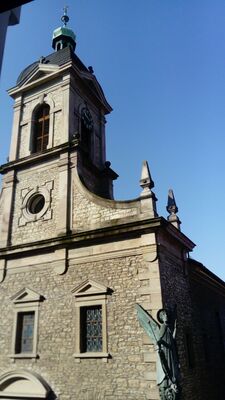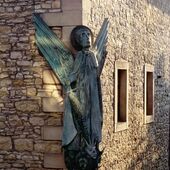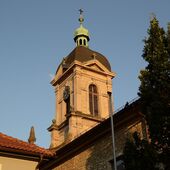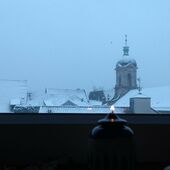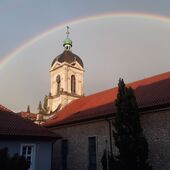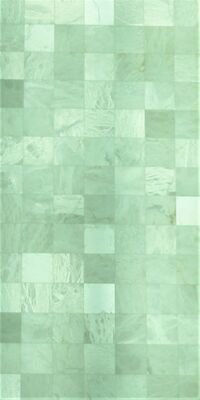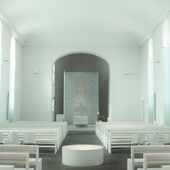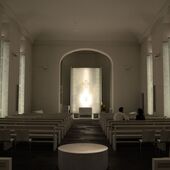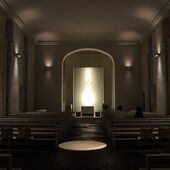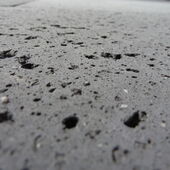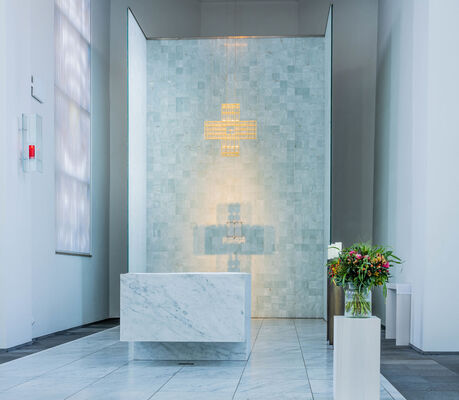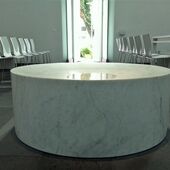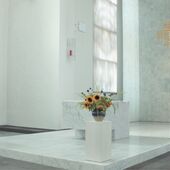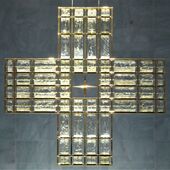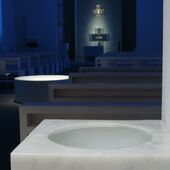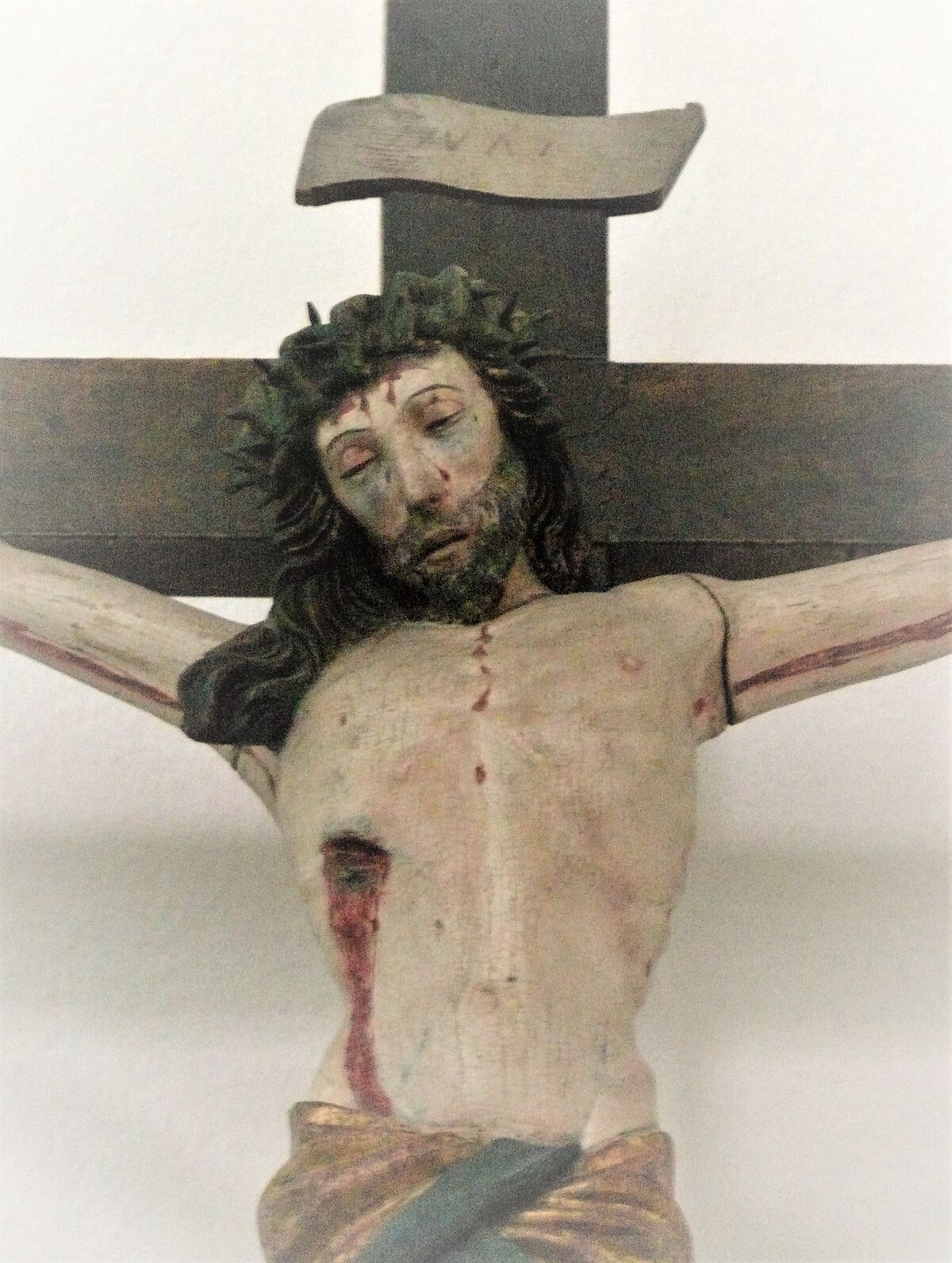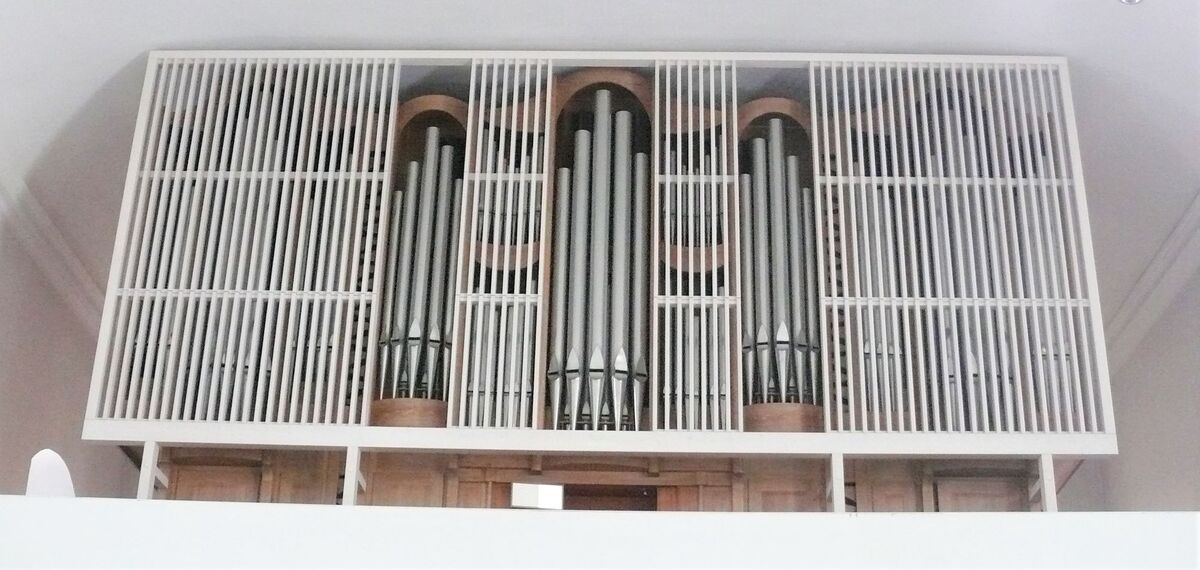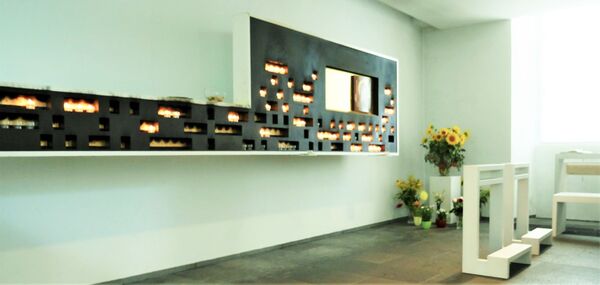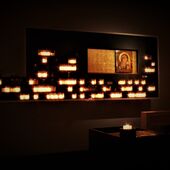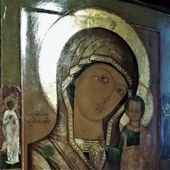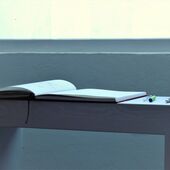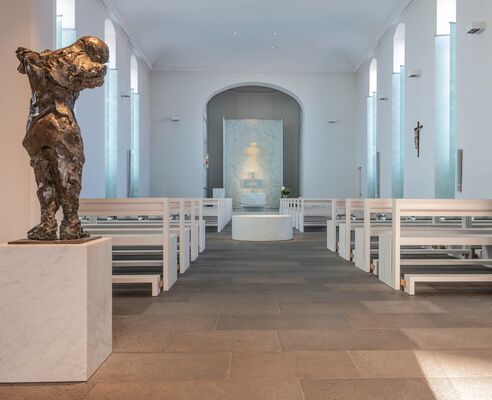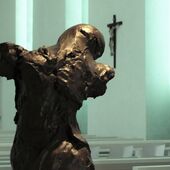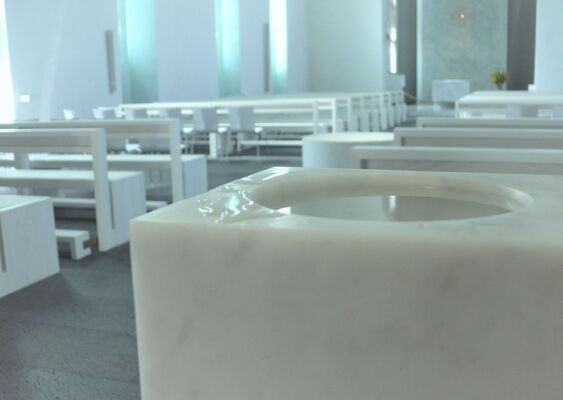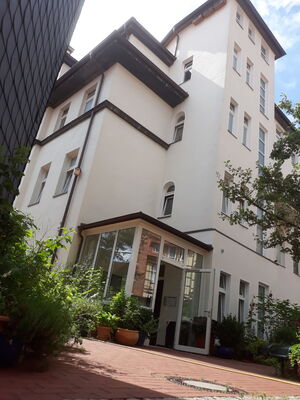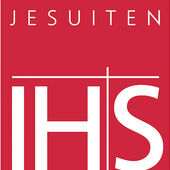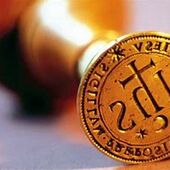The City Church of St.Michael
History
The city church of Saint Michael became, in 1789, the first Roman Catholic place of worship to be consecrated in the city. At that time, Catholics were only a small minority in Lutheran- dominated Göttingen.
External Architecture
Originally, the church of Saint Michael was designed to blend in inconspicuously with the facades of the houses in the street. Permission was first granted in 1893 for the addition of a high façade and bell tower. In 1986, a modern bronze representation of the Archangel Michael, by Josef Baron, was mounted in the north-eastern corner of the façade.
The Inner Space
The interior of the church was redesigned in 2014 by Gido Hülsmann, from Bochum. Due to his radical reduction of the inventory, the room became more than ever a place of stillness.
The floor is laid with dark, Armenian Lava-Basalt, a vulcanic stone that originates in the Earth’s interior.
The walls, ceiling and furnishings have been kept a light white, which allows for changes in colour and tone in accordance with alterations to the setting of the lighting. Behind the altar and in the window bays, a set of three alabaster screens , which open themselves out into the room, have been mounted. Light-emitting diodes are embedded in them, which allow the alabaster to shine during services.
The Apsis
A cross, composed of gold-gilded brass and hand-blown glass, hangs in the centre of the apsis. It originates from the ornamental smithery of the Benedictine Father, Abraham Fischer, at Königsmünster Abbey, in Meschede.
The Altar Plinth
Beneath the cross, one finds the altar plinth, with lectern and altar. As with the baptismal font in the middle of the church and holy water bowls at the entrances, they are made of Carrara marble. From the lectern, Biblical testimonies of faith are read out and presented. At the altar, the congregation celebrates its togetherness with God in the memory of Jesus’ death and resurrection. A vessel (ciborium) with consecrated hosts is kept in the tabernacle behind the screen in the apsis. To the left of the altar, the Eternal Light burns as a sign of God’s presence.
Crucifix
The oldest object of art in Saint Michael’s is a wooden cross, with body, from the sixteenth century. For over 200 years, it has been a part of the established inventory of our church.
The Organ
The stunning organ was built in 1989, in Passau, by the firm Eisenbarth, and installed on the gallery. As part of the renovation in 2015, it was clad in wooden slats.
Mary
For many people, the mother of Jesus is the embodiment of the comfort of God’s closeness. A separate room for prayer is dedicated to her at the back of the church.
Throughout the course of the whole day, people come to this place to relax, pray or light a candle. Here, there is also prayer book, in which prayer requests can be written. The altar for prayer candles is also a work created in Abraham Fischer’s smithy. The embedded icon originates from Russia.
Edith Stein
In the entrance, a bronze statue of a woman, which has been noticeably roughly worked, stands, with her upper body slightly turned. The figure and its accompanying plaque memorialize the Jewish philosopher, Edith Stein, and later Carmelite nun, Teresia Benedicta of the Cross. Edith Stein studied in Göttingen from 1913 to 1915. One of her diary entries from this time provides evidence of her standing one evening for a long time before the closed door of St. Michael’s church.
The representation by the sculptor, Peter Marggraf, gives us some understanding of the suffering that, some years later, would be brought upon her and millions of other Jewish people. It reminds people entering the church of those suffering and excluded in our own time.
The confessional
Every Saturday morning, one has the chance here, in a secure space, to speak openly with a priest and receive the Sacrament of Reconciliation. He or she who wishes to confess can choose between either an anonymous confession heard behind a screen (left door) or a face to face dialogue, whereby the person who wishes to confess and the priest sit opposite each other.
Holy Water
At the entrances, there are bowls of Holy Water, with which visitors to the church may, in remembrance of Baptism, make the sign of the cross. Whoever wishes to take some home may fill-up a small bottle next to the way up to the organ.

